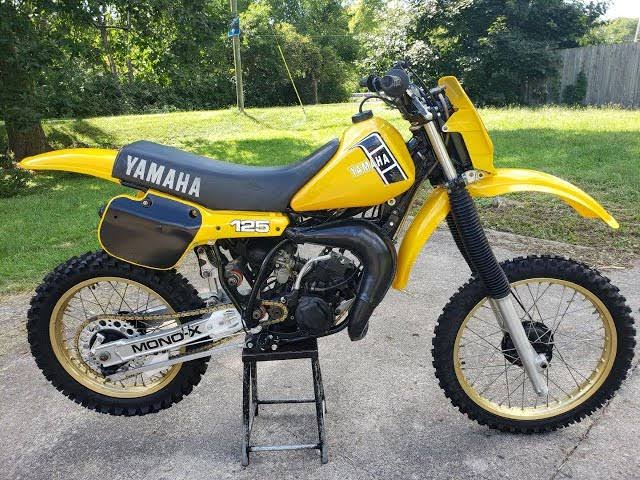Vintage Motocross Spotlight: The 1981 Yamaha YZ125 – A Powerhouse Ahead of Its Time
In the fast-evolving world of motocross during the early 1980s, Yamaha made a bold leap forward with the release of the 1981 YZ125. For many riders, including those who raced it in its heyday, the ’81 YZ125 marked a turning point in design and performance—a machine that combined cutting-edge innovation with raw, race-winning potential. However, with that potential came a set of unique challenges that demanded respect from anyone who threw a leg over it.
The 1981 YZ125 was Yamaha’s first production 125cc motocross bike to feature liquid cooling—a significant milestone in the development of two-stroke performance machines. Instead of placing the radiator on the sides of the frame like most later models, Yamaha engineers mounted it behind the front number plate, giving the bike a distinct and aggressive look. While this unconventional placement helped centralize mass and protect the radiator from roost and debris, it also subtly affected the bike’s handling dynamics in ways that riders would come to know intimately.
Another standout feature of the ’81 YZ125 was its monoshock rear suspension system, an evolution of Yamaha’s pioneering “Monocross” design. Unlike some earlier versions, the shock on this bike was mounted at an angle under the fuel tank. This gave the bike a progressive suspension feel and was intended to help manage the increasingly demanding jumps and whoops that riders faced on modernized motocross tracks. At the time, it represented Yamaha’s ongoing commitment to innovation and performance at the track.
For many riders, the 1981 YZ125 offered exhilarating power and throttle response. The engine was crisp and responsive, with an aggressive mid-range hit that could slingshot a skilled rider out of corners and into the lead. But this power came at a price.
The bike’s high center of gravity, due in part to the radiator placement and overall geometry, made it tricky to manage under full throttle, particularly while exiting turns. Riders who weren’t perfectly balanced or slightly off in body positioning found themselves wrestling with a front end that wanted to lift and a rear that could easily break loose. For some, this created a thrilling challenge; for others, it was a recipe for disaster.
Compared to its direct competitor, the Suzuki RM125, the Yamaha felt like a different animal. Where the RM was more forgiving and planted in the corners, the YZ125 had a twitchier personality. The front end was quick, and the rear suspension—while innovative—could be unpredictable when the terrain got choppy. This led to more than a few unexpected high-sides for riders trying to push the limits, especially under hard acceleration out of rutted turns.
For one veteran rider who piloted the 1981 YZ125 during its release year, the experience was equal parts thrilling and punishing.
“This bike had great power, no doubt,” he recalled. “But it was tough to keep the front end down out of the corners. Compared to the RM, the YZ just wanted to high-side on me. I ended up with some serious injuries that year because of it.”
Indeed, the 1981 season was a learning curve for many riders adapting to this new breed of motocross machine. The YZ125 demanded a higher level of precision, body control, and track awareness. It wasn’t a bike that forgave mistakes easily—but in the hands of a rider who could harness its full potential, it was a serious threat on the starting gate.
Today, the 1981 YZ125 holds a special place in motocross history. It’s remembered not just for being Yamaha’s first liquid-cooled 125, but also for being a symbol of innovation in a time of rapid technological evolution in the sport. Vintage motocross enthusiasts and collectors often seek out this model for restoration projects, drawn to its unique radiator placement, monoshock design, and the bold spirit it represents.
As motocross continues to evolve, the 1981 YZ125 serves as a reminder of a time when performance breakthroughs came fast and often with a price. For riders who experienced it firsthand, it wasn’t just a bike—it was a battle-tested machine that pushed the limits of what 125cc motocross could be.



